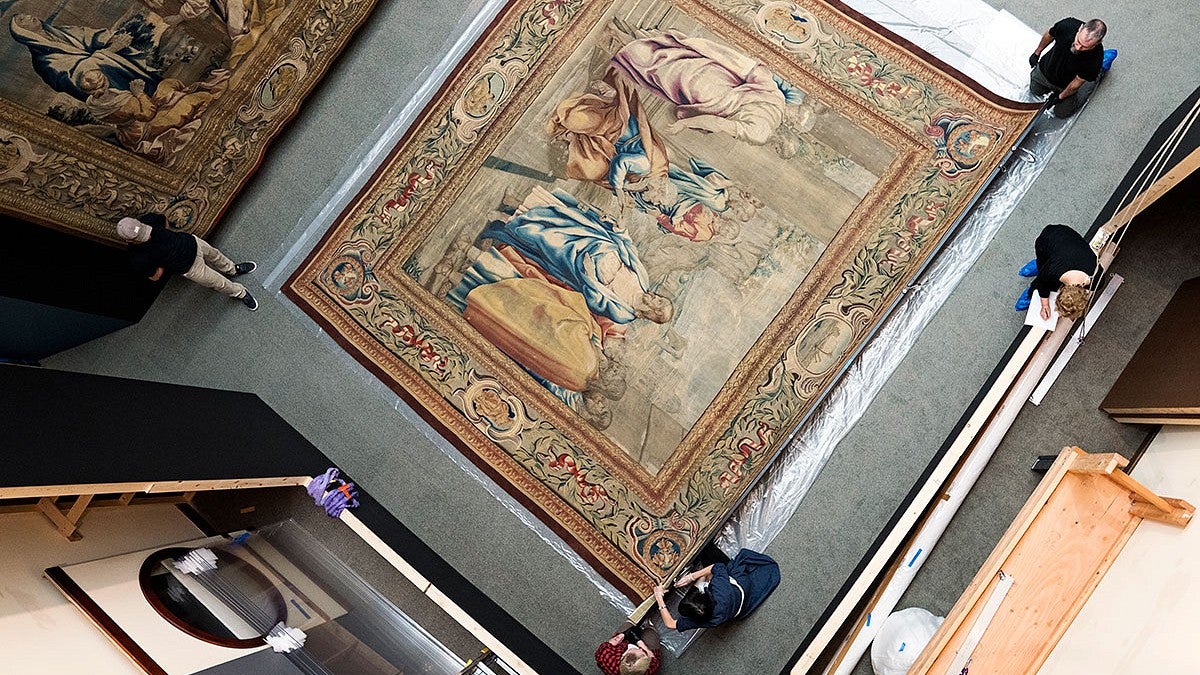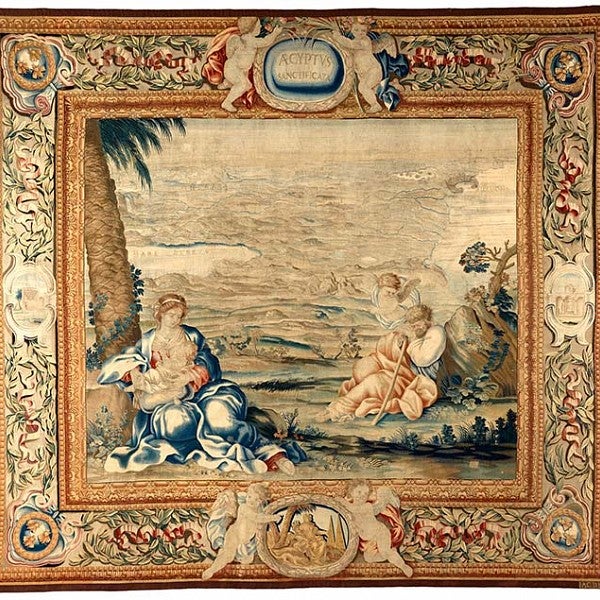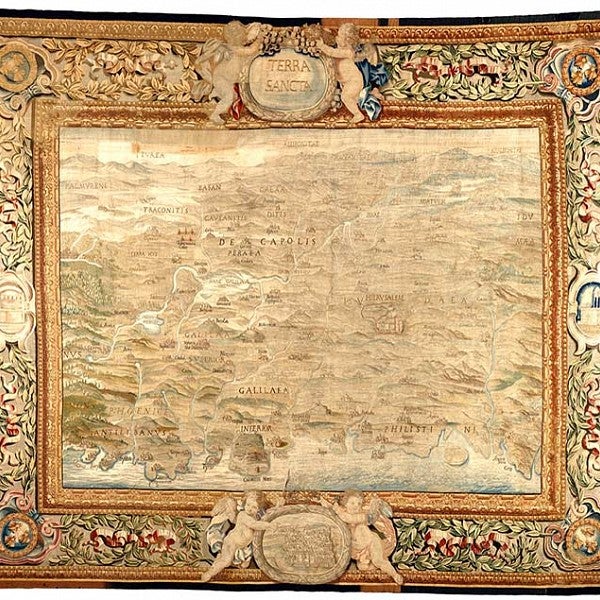
“Breathtaking” is the oft-repeated description of the 12 Italian tapestries from the 17th century housed at the Cathedral of St. John the Divine in New York City and now on loan to the Jordan Schnitzer Museum of Art at UO through January 21.
The centerpiece of the show is the renowned tapestry series of the Life of Christ, which has not traveled since it came to America from Italy in 1889. Eugene is the only city selected to display the spectacular textiles outside of New York, which exhibited them last spring.
If landing the Eugene exhibition for the tapestries wasn’t enough of a coup, JSMA also set a precedent for the installation itself.
“We’re [displaying] this series in 17th century style, in an immersive wraparound hang, so that the viewer walks into the room and is entirely surrounded by tapestry,” UO art history professor James Harper said of the exhibition. With each panel nearly 16 feet tall and between 12 and 19 feet in length, the massive Life of Christ promises quite an immersion.
Harper curated both the Eugene and New York exhibits along with Marlene Eidelheit, director of the Textile Conservation Laboratory at the Cathedral of St. John the Divine. JSMA chief preparator Joey Capadona also played a key role in the Eugene installation. Additionally, three textile conservators came from the Cathedral of St. John the Divine to assist with the installation. They included Senior Conservator Valerie Soll, BA ’75, fibers. The project was funded in part by grants from the National Endowment for the Arts and the National Endowment for the Humanities.
To mount the show, the JSMA had to retrofit its Soreng Gallery, which normally houses Chinese art, because it was the only space in the museum large enough to accommodate the tapestries’ height. Museum staff created a room-within-a-room within the gallery to perfectly fit the tapestries.
“Seeing a true baroque-style wraparound installation lets our visitors understand something of the richly luxurious, visually warm, sensuously enveloping experience that makes tapestry unique,” Harper said.
Along with rare books and period objects, the exhibition also includes interactive digital kiosks providing layers of information about each tapestry. The digital interface, developed by the UO’s GIS & Mapping Team, is available on iPads in the galleries as well as online.
“Using the iPads, users can zoom in or pan around any of the images of the tapestries,” said Ken Kato, director of UO Campus GIS and mapping. “We adapted software for processing high aerial imagery and map data for emergency responders,” he said. “In this case, Professor Harper is using the tool to annotate historical artifacts, rather than maps for emergency response, but the concept is the same.”
Faculty campus-wide, in fields ranging from history to weaving to religion, were invited to engage with the exhibition and use it in their teaching.
“This is a perfect example of the constant collaboration between the university’s museum and the College of Design,” Harper said, “demonstrating both the value of our college to the museum and the value of the museum to our college.”
Harper wrote six of seven chapters in a book that accompanies the exhibit (Eidelheit wrote the seventh). Celebrated art publisher Officina Libraria srl, in Milan, produced the monograph.
The book has already “caught the attention of people in Rome,” Harper told Register-Guard arts writer Alex Cipolle. Harper will travel to the tapestries’ birthplace in Italy to give a presentation October 11, at the Palazzo Barberini, which houses Rome’s National Gallery of Art.
Harper will be leading a curator’s tour on October 1 at 2 p.m. Join him at the JSMA for a special gallery tour of the tapestries. And on November 29, 12-1:30 p.m., students from Harper’s Inside Museum Exhibits class will share their research on the tapestries.
For more public events related to the exhibit, visit the museum’s Barberini programs page.
The Jordan Schnitzer Museum of Art is open 11 a.m. to 8 p.m on Wednesdays, and 11 a.m. to 5 p.m. on Thursdays through Sundays. Admission is $5 for adults, $3 for senior citizens; and free to those aged 18 and under, members, college students with ID and UO faculty, staff and students.




